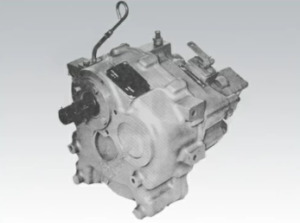March 13, 2025
Initial Testing Procedures for Twin Disc MG502 Marine Gear
1. Visual Inspection Before Testing
2. Fluid Level Inspection
3. Manual Rotation Test
4. Initial Power Test
5. System Shut Down and Inspection
Load Testing and Calibration for Twin Disc MG502 Marine Gear
1. Preparing for Load Testing
2. Conducting Load Tests
3. Key Calibration Checks
4. Observing Operational Behaviors
Noise and Vibration Checks for Twin Disc MG502 Marine Gear
1. Noise Detection Procedures
2. Vibration Analysis Procedures
3. Common Issues Identified by Noise and Vibration Checks
Post-Service Inspection Checklist for Twin Disc MG502 Marine Gear
1. Final Visual Inspection
2. Fluid and Lubrication Check
3. Alignment Verification
4. System Functionality Test
5. Documentation and Reporting
Conclusion
Videos About Twin Disc Transmissions
Read More
March 13, 2025
Pre-Assembly Checklist for Twin Disc MG502 Marine Gear
1. Gather Required Tools and Materials
2. Inspection of Components
3. Cleaning Components
4. Organizing the Work Area
Step-by-Step Reassembly Guide for Twin Disc MG502 Marine Gear
Step 1: Installing Bearings
Step 2: Installing the Input Shaft
Step 3: Installing the Output Shaft
Step 4: Assembling Gear Sets
Step 5: Installing the Clutch System
Step 6: Securing Seals and Gaskets
Step 7: Reassembling Housing Covers
Torque Specifications for Fasteners in Twin Disc MG502 Marine Gear
1. General Torque Guidelines
2. Torque Application Best Practices
Testing Component Alignment for Twin Disc MG502 Marine Gear
1. Shaft Alignment
2. Gear Alignment
3. Clutch System Alignment
Conclusion
Videos About Twin Disc Transmissions
Read More
March 13, 2025
Cleaning Guidelines for Major Components of Twin Disc MG502 Marine Gear
1. Cleaning the Gear Housing
2. Cleaning the Input and Output Shafts
3. Cleaning Bearings
4. Cleaning Gear Sets
5. Cleaning Hydraulic Lines and Connections
Lubrication Requirements for Twin Disc MG502 Marine Gear
1. Selecting the Right Lubricant
2. Lubrication Procedures for Major Components
Seal and Gasket Replacement for Twin Disc MG502 Marine Gear
1. Identifying Worn Seals and Gaskets
2. Replacement Process
Best Practices for Preventing Corrosion in Twin Disc MG502 Marine Gear
1. Regular Cleaning
2. Applying Protective Coatings
3. Environmental Storage
4. Fluid Management
Conclusion
Videos About Twin Disc Transmissions
Read More
March 13, 2025
Visual Inspection Techniques for Twin Disc MG502 Marine Gear
1. Preparation for Visual Inspection
2. Systematic Visual Inspection Process
Identifying Common Faults in Twin Disc MG502 Marine Gear
1. Oil and Fluid Leaks
2. Cracks and Deformations
3. Excessive Wear on Gears and Bearings
4. Hydraulic System Failures
Diagnostic Procedures for Malfunctions in Twin Disc MG502 Marine Gear
1. Noise and Vibration Analysis
2. Temperature Monitoring
3. Oil and Fluid Analysis
Measuring Tolerances and Clearances for Twin Disc MG502 Marine Gear
1. Measuring Gear Backlash
2. Checking Shaft Run-Out
3. Bearing Clearance Measurements
4. Seal and Gasket Thickness Inspection
Conclusion
Videos About Twin Disc Transmissions
Read More
March 13, 2025
Preparation for Disassembly of Twin Disc MG502 Marine Gear
1. Gather Required Tools and Materials
2. Safety Precautions Before Disassembly
3. Document Component Positions
4. Initial Inspection Before Disassembly
Step-by-Step Disassembly Process for Twin Disc MG502 Marine Gear
Step 1: Remove External Components
Step 2: Dismantle the Housing Covers
Step 3: Extract the Input Shaft
Step 4: Remove the Output Shaft
Step 5: Disassemble the Clutch System
Step 6: Extract Gear Sets
Step 7: Remove Bearings and Seals
Identifying Wear and Tear Components in Twin Disc MG502 Marine Gear
1. Bearings
2. Gears
3. Seals and Gaskets
4. Clutch Plates
5. Shafts
Handling and Storing Components for Twin Disc MG502 Marine Gear
1. Cleaning Components
2. Storing Components Safely
3. Protecting Sensitive Components
Conclusion
Videos About Twin Disc Transmissions
Read More
March 13, 2025
Required Tools and Equipment for Twin Disc MG502 Marine Gear
1. Hand Tools
2. Specialized Marine Tools
3. Measuring and Diagnostic Tools
4. Cleaning and Lubrication Equipment
5. Replacement Parts and Consumables
Safety Gear and Precautions for Twin Disc MG502 Marine Gear
1. Essential Safety Gear
2. Pre-Service Safety Precautions
Inspection Steps Before Service for Twin Disc MG502 Marine Gear
1. Visual Inspection
2. Oil and Fluid Inspection
3. Hydraulic System Test
4. Component Movement Inspection
5. Control System Check
Maintenance Schedule Overview for Twin Disc MG502 Marine Gear
1. Daily Maintenance
2. Weekly Maintenance
3. Monthly Maintenance
4. Quarterly Maintenance
5. Annual Maintenance
Videos About Twin Disc Transmissions
Read More




 Free US Calls: 1-888-433-4735
Free US Calls: 1-888-433-4735 International: 305-545-5588
International: 305-545-5588